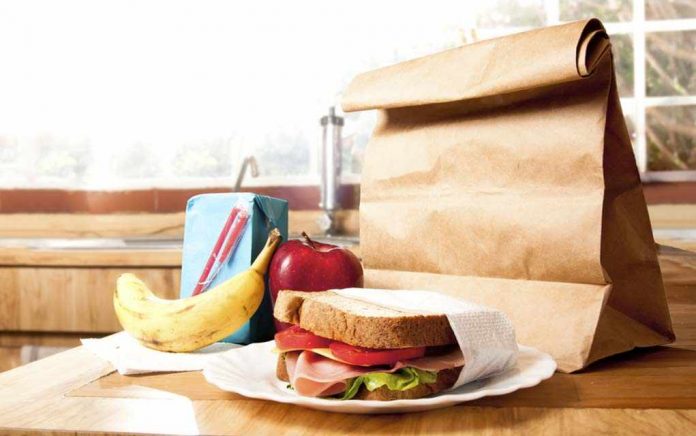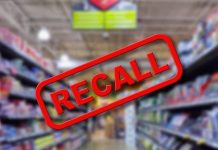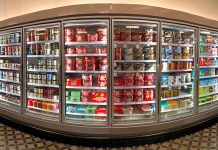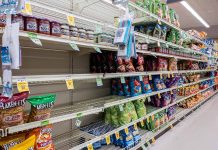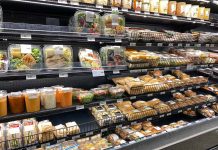Whether it’s off to school or work, millions of Americans carry “bag” lunches. Food brought from home can be kept safe if it is first handled and cooked properly. Then, perishable food must be kept cold while commuting via bus, bicycle, on foot, in a car, or on the subway. After arriving at school or work, perishable food must be kept cold until lunchtime.
Why keep food cold?
Harmful bacteria multiply rapidly in the “Danger Zone” — the temperatures between 40 and 140 °F (4.4 °C and 60 °C). So, perishable food transported without an ice source won’t stay safe long. Here are safe handling recommendations to prevent foodborne illness from “bag” lunches.
Begin with Safe Food
Perishable food (refrigerated), including meat, poultry and eggs, must be kept cold at all times. Eggs should be purchased cold at the store and kept cold at home. In between store and home, transport perishable food as fast as possible when no ice source is available. At home, refrigerate perishables promptly. Food should not be left out at room temperature more than 2 hours — 1 hour if the temperature is above 90 °F (32.2 °C).
Prepackaged combos are sometimes packed for lunch. These combos often contain perishable foods such as luncheon meats, cheese, and cut fruit that must be kept refrigerated, even though they may be cured or contain preservatives.
Keep Everything Clean
Before beginning to pack lunches, make sure to wash your hands with soap and warm water for 20 seconds. Wash cutting boards, dishes, utensils, and countertops with hot, soapy water after preparing each food item and before you go on to the next item. A solution of 1 tablespoon of unscented, liquid chlorine bleach in 1 gallon of water may be used to sanitize surfaces and utensils. Keep family pets away from kitchen counters.
Don’t Cross-Contaminate
Harmful bacteria can spread throughout the kitchen and get onto cutting boards, utensils, and countertops. Always use a clean cutting board. When using a cutting board for food that will not be cooked, such as bread, lettuce, and tomatoes, be sure to wash the board after using it to cut raw meat and poultry. Consider using one cutting board for fresh produce and a separate one for meat and poultry.
Packing Lunches
Pack just the amount of perishable food that can be eaten at lunchtime. That way, there won’t be a problem about the storage or safety of leftovers. After lunch, discard all leftover food, used food packaging, and paper bags. Do not reuse packaging because it could contaminate other food and cause foodborne illness.
It’s fine to prepare the food the night before, but pack lunch bags right before leaving home. Freezing sandwiches helps them stay cold. However, for best quality, don’t freeze sandwiches containing mayonnaise, lettuce, or tomatoes. Add these later.
Insulated, soft-sided lunch boxes or bags are best for keeping food cold, but pack at least two ice sources with perishable food in any type of lunch bag or box you use.
Keeping Cold Lunches Cold
Prepare cooked food, such as turkey, ham, chicken, and vegetable or pasta salads, ahead of time to allow for thorough chilling in the refrigerator [40 °F (4.4 °C) or below]. Divide large amounts of food into shallow containers for fast chilling. Keep cooked food refrigerated until time to leave home.
To keep lunches cold away from home, include at least two cold sources. You can use two frozen gel packs (not smaller than 5×3-inches each) or combine a frozen gel pack with a frozen juice box or frozen bottle of water. Freeze gel packs overnight. When packing your bag lunch, place them on top and bottom of the perishable food items to keep them cold. Of course, if there’s a refrigerator available at work or school, store perishable items there upon arrival. If you place your insulated bag in the refrigerator, leave the lid or bag open so that cold air can keep the food cold.
Some food is safe without a cold source. Items that don’t require refrigeration include whole fruits and vegetables, hard cheese, canned meat and fish, chips, breads, crackers, peanut butter, jelly, mustard, and pickles.
Keeping Hot Lunches Hot
Use an insulated container to keep food like soup, chili, and stew hot. Fill the container with boiling water, let stand for a few minutes, empty, and then put in the piping hot food. Keep the insulated container closed until lunchtime to keep the food hot — 140 °F (73.9 °C) or above.
Microwave Cooking/Reheating
When using the microwave oven to reheat lunches, cover food to hold in moisture and promote safe, even heating. Reheat leftovers to at least 165 °F (73.9 °C), making sure to use a food thermometer to be sure a safe temperature has been reached before consuming the food. Cook frozen convenience meals according to package instructions.
Read the full USDA article here.
As published by HealthyExaminer.com
